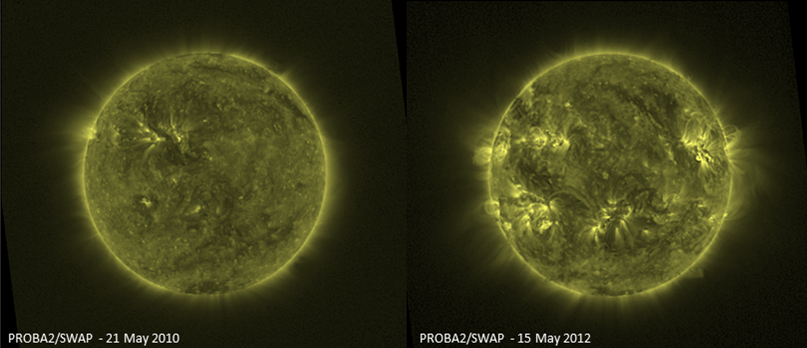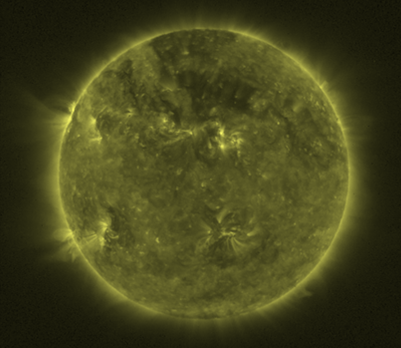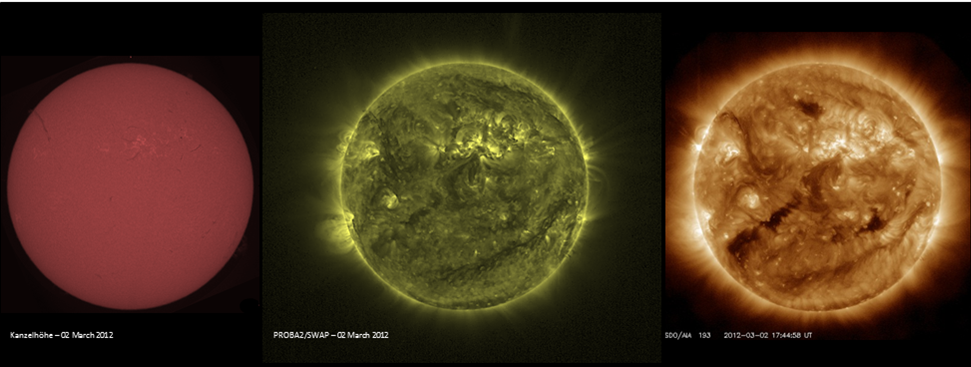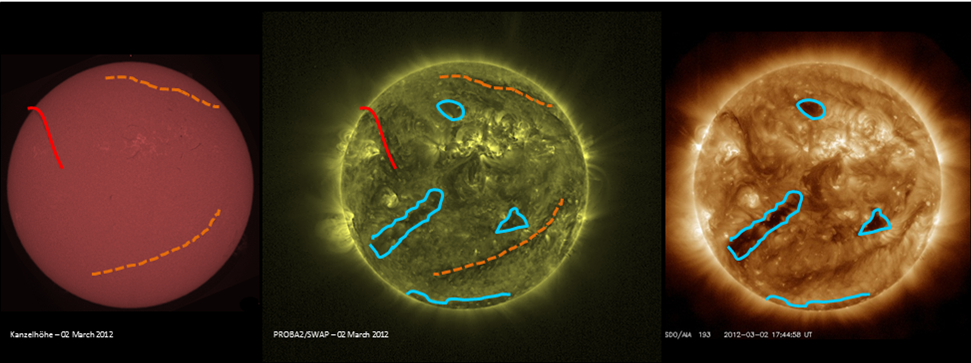PROBA2 is an ESA micro-satellite that was launched on November 2, 2009. It carries an on-board camera to image the Sun in the Extreme Ultra-Violet (EUV). The images obtained with this SWAP-instrument show the solar corona at 1 million degree, with a cadence of 1 image per 1-2 minutes, and a field of view (FOV) of minimum 1.7 solar diameters. More information on this imager is available at the SWAP-webpage.
As PROBA2 radioed the first SWAP-images to Earth early January 2010, there are now more than 2.5 years of EUV-images available. This corresponds to the rising phase of the ongoing solar cycle 24. At the most recent Solar Orbiter workshop, the SWAP-team presented a movie showing the evolution of the solar corona throughout this period (February 2010 till July 2012).The increase of active regions (bright) is easily noticed. These areas often correspond to sunspot regions. Initially the northern hemisphere dominates the solar activity, but at the end of the period the southern hemisphere catches up.

Because the solar rotation axis is not perpendicular to the plane of the Earth around the Sun, we have a better view on the solar north pole during August-October, and on the solar south pole during February-April. This can also be seen in the SWAP-movie, where one has a better view on the polar coronal holes pending the month of observing. These coronal holes have a dark appearance because they are colder and less dense than the surrounding (coronal) areas. The polar coronal holes are explicitly present during solar minimum. As the solar cycle gradually progresses, coronal holes can appear all over the solar surface. The SWAP-image underneath (29 June 2010) shows the northern polar coronal hole with a large extension up to mid-latitudes.

Some of the dark, long-stretched features are not coronal holes, but filaments. These are areas of dense, but cool material in the Sun's lower atmosphere where they separate regions of opposite magnetic polarity. They can become very long, some even longer than a solar radius! The distinction between a stretched coronal hole and a filament can be made using different filters (coronal holes do not show up in lower temperature filters), or when the object reaches the solar limb: If it is a filament, its silhouette can then be seen in EUV as a dark feature towering over the limb against the bright coronal background. Note that in EUV, not all dark, stretched areas delineating regions of opposite magnetic polarity have a chromospheric counterpart. Such areas are sometimes called "pseudo coronal holes". In the figure underneath, borders separating areas of opposite magnetic polarity were indicated by red if they have a visible filament in the chromosphere, or dashed-orange if not (or only partially). The areas in blue indicate coronal holes. Images are from the Kanzelhöhe observatory, PROBA2/SWAP and SDO/AIA193.


 |
 |





